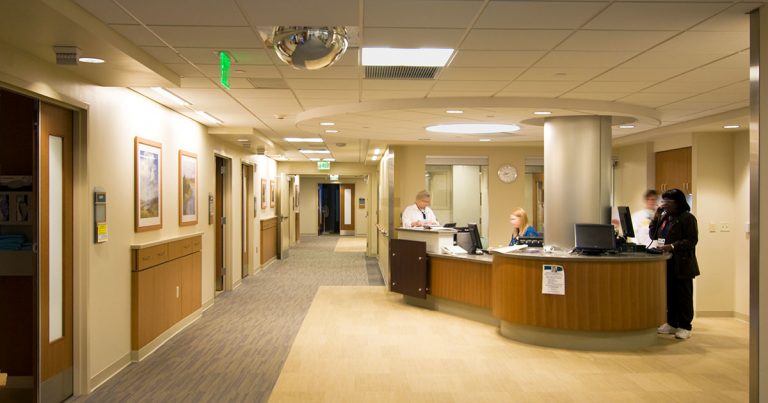A quieter hospital floor provides a more restful healing environment. Healthcare studies show how increased noise levels interrupt sleep, and patient satisfaction surveys consistently rank “quiet at night” among the lowest scores.
Hospital Floor Research
In a white-paper, “Developing a New Standard – Examining in-room impact noise reduction of various flooring materials,” developed by ABD Engineering & Design with Nora by Interface summarized research on how flooring contributes to a create a quieter hospital floor.
Over the last several decades, there has been an increased awareness of the detrimental effects of noise in the built– environment. Design guidelines and standards have been developed to effectively address some of the root causes of excessive noise inside buildings.
FGI Standards
The 2018 FGI Standards for the design and construction of Healthcare Facilities, and Residential Healthcare Facilities, all include an acoustical component. The six distinct parts of the guidelines include: Site Exterior Noise, Acoustical Finishes and Details, Room Noise Levels, Performance of interior wall and floor/ceiling constructions (Noise Isolation), Speech Privacy (HIPAA), Building Vibration and Structure-borne Sound. Impact sound, addressed by flooring can contribute as an acoustical finish, and as a component of noise isolation.
Working with a qualified acoustical consultant early in the design and construction phases of a project helps to avoid surprises after occupancy, and goes beyond product guesswork. ABD provides the acoustical engineering needed for a quieter healthcare facility.
